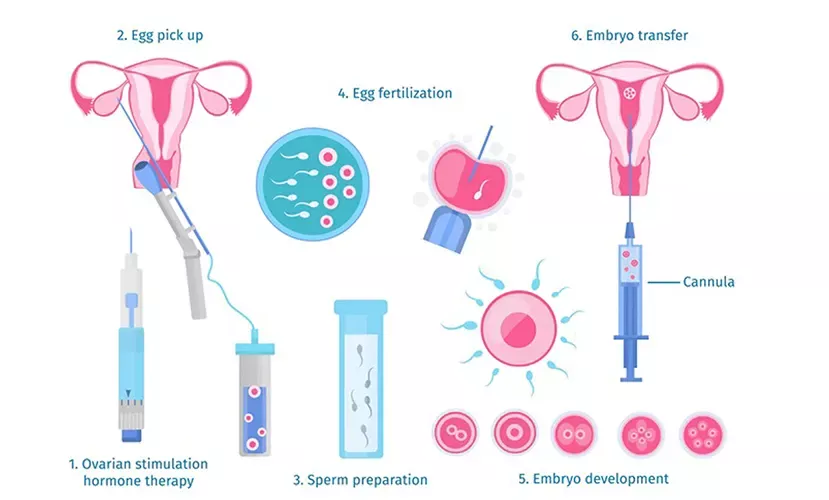IVF

What Is A Test-Tube Baby?
In vitro fertilization is the most widely used assisted reproductive treatment nowadays. Technically, in vitro fertilization treatment is the selection of a specific number of fertilized egg cells (embryo) by fertilizing the female egg cell (oocyte) and male sperm cell (sperm) outside the body and placing them in the uterus under properly prepared laboratory conditions.
What Are The Stages of IVF (In Vitro Fertilization) Treatment?
1 – Ovulation Treatment; ;
The expectant mother is given drugs with various properties that develop the eggs 2-3 days after the start of her menstrual period. The drug dose is determined by the rate of development of the eggs as seen on a vaginal ultrasound. Within 14 days, the drugs take effect, and the eggs reach a size that allows them to be collected.
2 – Collecting the Eggs ;
The "cracking needle" collects eggs with a needle using transvaginal ultrasound approximately 33-36 hours after the injection. The procedure takes about 20 minutes and is done under general anesthesia or sedation. In the laboratory, the eggs are taken into the culture medium.
3 – Acquiring sperm;
Masturbation is used to collect sperm. If masturbation cannot be used to obtain sperm, TESE (surgical testicular sperm extraction) or TESA (testicular sperm aspiration) is preferred. The collected sperm is separated from the semen, and the selected sperm is used to fertilize the eggs in the laboratory.
4 – Fertilization;
Fertilization is accomplished through ICSI methods, which involve combining mature and healthy sperm and eggs in the laboratory (IVF, insemination) and inserting the sperm directly into the egg. Following the procedures, it is checked after 16-18 hours to see if fertilization has occurred. Embryo division occurs in the days that follow. Five days after the embryo is formed, genetic tests can be performed to identify healthy embryos.
5 - Embryo Transfer;
one or more healthy embryos are transferred to the woman's uterus via a thin catheter on the third or fifth day of fertilization. Anesthesia also isn't needed since the procedure is painless. It takes about 12 days for the embryo to attach or not.
6 – Pregnancy test;
On the 12th day of embryo transfer, a urine or blood test is performed to determine whether the procedure was successful or not. If the test yields a positive result, it is repeated two days later. If a pregnancy has occurred, how many of the embryos transferred via ultrasound have survived after 14 days is determined.
How Many Days Should International Patients Stay For In Vitro Fertilization?
Our international patients who come for IVF (in vitro fertilization) should stay for at least 20 days. No flight permits will be issued prior to this date.

